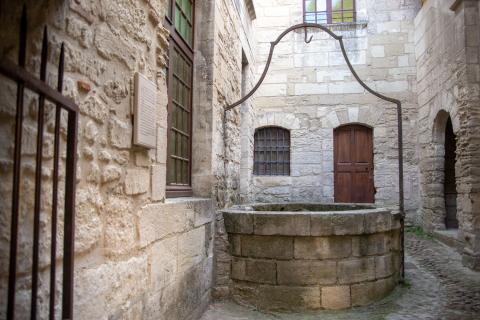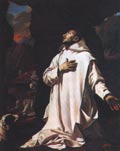The Sexton lived in a cell which had 2 levels. His living quarters were on the upper level, and the ground floor level was used for cutting the monks’ hair. Community life went according to the rhythm of the liturgical offices and prayer, and the sexton had two important functions. He was both the master time-keeper and the guardian of the church treasure. The year 1551 was undoubtedly an important year for a clock was installed in La Chartreuse, a pendulum clock which drove the bell in the church belfry. Prior to 1551, time was told in a more rudimentary, uncertain way perhaps based on the cock crowing, the stars, the burning of candles, hourglasses, sundials, clepsydra or even the uninterrupted chanting of psalms.
In addition, the sexton was in charge of maintaining the liturgical vestments, furnishings and utensils.
The lower level of the sexton’s cell was known as “La Rasure” for the monks were shaved there and their tonsure was trimmed regularly. Their tonsured hair was symbolic of Christ’s crown of thorns. Water was piped into the courtyard (you can see the well in the photograph) and was very useful.
Close-up on history.
1084-1353: SAINT-BRUNO, THE CARTHUSIAN ORDER and THE CHARTREUSE IN VILLENEUVE
In 1084, before the future Saint Bruno was proclaimed a saint, he withdrew with six companions in the French Alps, in the mountains known as La Grande Chartreuse. Together, the group of men combined community life and solitude, contemplation and work. This was a new form of monastic life, and the rules* were set in the year 1127, with the beginning of the Carthusian order. From the very start, the community was divided into two groups. Fathers led a life of prayer in their cells, while the Brothers took charge of the necessities of everyday life. This was to remain one feature of the order. Other Carthusian monasteries were erected, the Chartreuse in Valbonne, the Chartreuse in Bonpas...
Not surprisingly, these monasteries were all far from the city centres. La Chartreuse in Villeneuve-lès-Avignon is a true exception, due to its history that is closely related to the papacy in Avignon.
Prior to the year 1353, La Chartreuse de Villeneuve was not yet a monastery; it was a cardinal’s palace, the home of a great leader of the church, the palace of cardinal Etienne Aubert. In 1353, Etienne Aubert was elected pope, and became Pope Innocent VI. He gave his palace to the Carthusian order.





